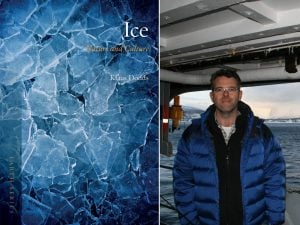
Environment
Last bastion of ice
What the collapse of the Milne ice shelf and the loss of a rare Arctic ecosystem might teach us about a changing planet
- 2894 words
- 12 minutes
This article is over 5 years old and may contain outdated information.
History

The first surveying trip of the 2014 Victoria Strait Expedition is wrapping up, with the crew of the research vessel Martin Bergmann making the 24-hour journey back to Cambridge Bay, Nunavut, to resupply.
Parks Canada’s underwater archaeology team surveyed in the Queen Maud Gulf for 52 straight hours, using side-scan sonar. The early focus this year was on Wilmot and Crampton bays, areas where Inuit in the 19th century claimed to have spotted a mast protruding from the water.
“It was the largest stretch of benign weather that we’ve had since we started surveying in 2008,” says Parks Canada archaeologist Ryan Harris, who is helping lead the search for Sir John Franklin’s lost ships, Erebus and Terror. “We picked up where we left off last year, surveying 60.75 square kilometres.”
The ice-free and calm waters of the Queen Maud Gulf made for ideal surveying during the most recent search period. Looking forward, however, conditions seem somewhat less promising. The central Arctic is experiencing an especially heavy ice year, with ice covering upward of 90 per cent of the ocean’s surface in the Victoria Strait and parts of Peel Sound.
“We’ve had a really good run when it comes to ice cover allowing us to do our work,” Harris says. “It’s been very clear of ice during our surveys. The exception was 2009, when we didn’t have a platform to search from anyway, so it was a good year to miss. We were due for a change of fortune, and it’s not looking terribly promising at the moment. It’s hard not to think of what Franklin and his men were facing when they were beset in Larsen Sound. It’s quite possible that the Erebus and Terror were faced with a very similar situation to what we’re seeing this year when they were caught in the ice.”
Are you passionate about Canadian geography?
You can support Canadian Geographic in 3 ways:

Environment
What the collapse of the Milne ice shelf and the loss of a rare Arctic ecosystem might teach us about a changing planet

Environment
In his new book, Klaus Dodds delves into the fascinating natural and cultural history of ice

People & Culture
As the climate heats up, so do talks over land ownership in the Arctic. What does Canadian Arctic Sovereignty look like as the ice melts?

History
Arctic historian Ken McGoogan takes an in-depth, contemporary perspective on the legacy of Sir John Franklin, offering a new explanation of the famous Northern mystery